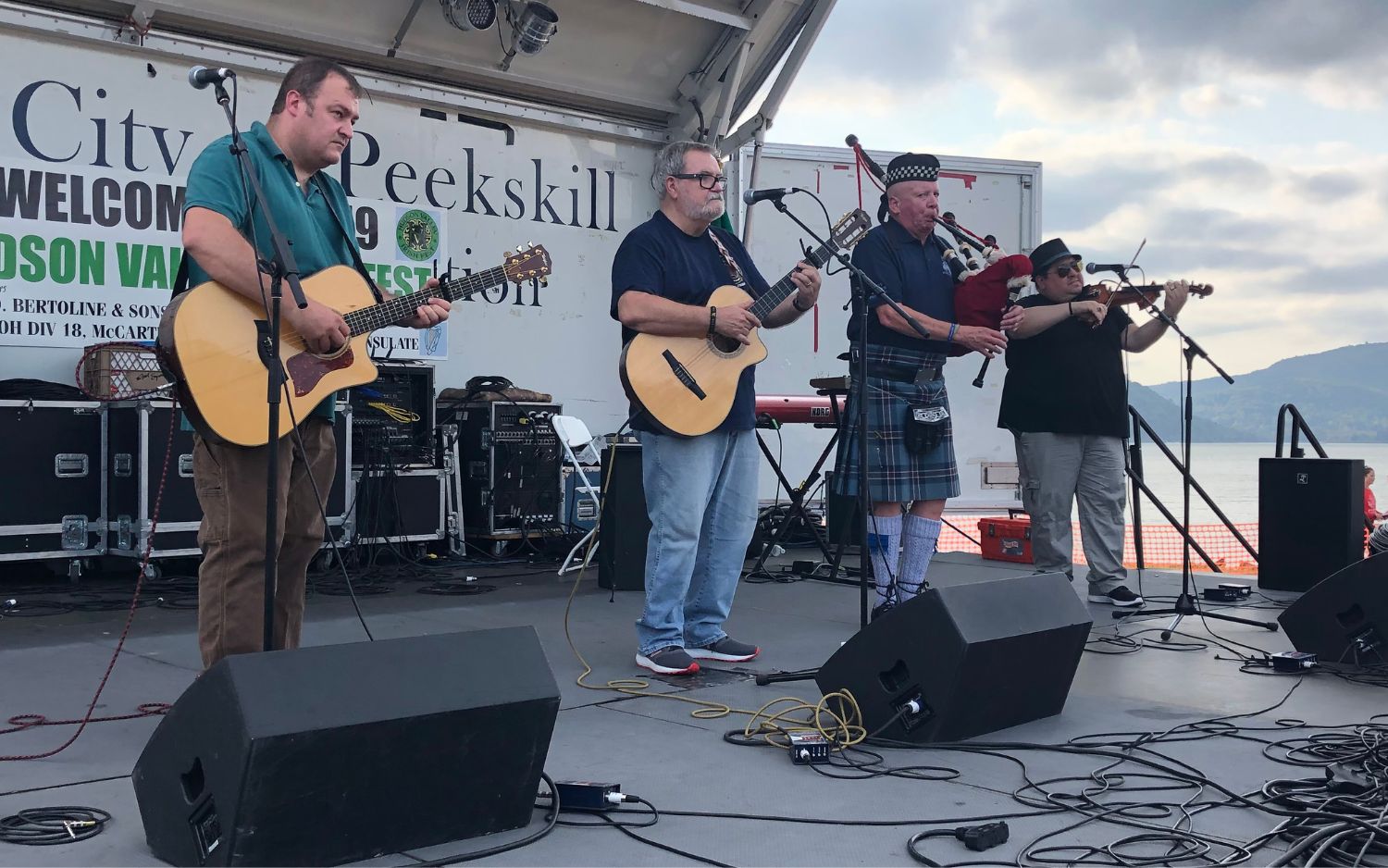At first, it seemed to be nothing. It was a curled-up dark brown leaf about the size of a good lock of hair and it was preserved in glass in a room in the Fairlow Herbarium in Cambridge, Massachusetts. A typewritten card alongside the leaf said that it was taken from an infected potato plant in Ireland during the famines of 1845-50. I looked at the leaf, read the card and began to walk away and, of course, did not leave. Here in this glass case was the weapon used by the earth when it turned against man and nearly ended a nation, the leaf that determined the character of its people, wherever they were, for generations at least. Behind the glass case, on long shelves, was an impressive line of books. There also was in the room a man who could help me decipher some of the written matter. I decided to forget about taking one of the morning shuttles to New York. I sat at a table. Usually, when you are around relics of things Irish, you hear in your mind a song or have the feel of a smile.
This time, the hand went for a book. At the time of the famine, the man in charge of the room observed, mycology, the study of fungi, was only beginning. People from a couple of places in the world went to Ireland to collect blighted plants and then took them back to their laboratories to study. But they could give Ireland no help.
By the time the famine was ending, the potato fungus was only being given a name: “phytophtora infestans.” One of the things most vile about the use of a dead language is the manner in which the message of horror becomes lost in the struggle to absorb the habitual syllables.The man in the Fairlow Herbarium suggested one of the books, The Advance of the Fungi by E.C. Large. The author noted that in good weather the potato fungus reproduced sexually. However, when conditions were constantly wet and chilly, the fungus reproduced asexually, and at great rapidity. On two occasions during the famine years, there was a chill rain that did not seem to end. Fungus appeared wherever the land was wet. Potato leaves became brown and started to curl up and the potato underneath became purple and mushy. With no food, over a million died and millions fled.
The book says that experiments over the years show that the blighted potato was edible. Because of the fungus causing the inside of the potato to break down, much of the starch turned into sugar, thereby giving the potato a strange, sweet taste. This is something that can be said in the safety of a laboratory. But while a million were dying, people tried to eat the potatoes and found they could not.
The potato originates in the Andes Mountains of Peru, where it grows in many varieties. However, the English, who introduced it to Ireland in the 16th century, planted only one variety, the clone, and it is susceptible to the wet fingers of fungus. With no second variety of potato plant to withstand the disease, the blight became total. The Irish, ignorant of all this, planted any eyes which seemed even vaguely uninfected and prayed that the next crop would be clean. But the new plants were as infected as the ones from which they came.
As I was reading this, I began to think of the crumbling stone building on Bantry Bay, in Cork. The ruin stands right on the bay, at a point where the rocky shore builds up to great cliffs that go along flat, deep water until the water begins to rise and fall in great swells and suddenly the land ends and now it is ocean, not bay, slapping against the bottom of the cliff and sending spray high into the air, up to the top of the cliff. The ruins sit in a tangle of rough brush and are difficult to reach.
In 1845, at the height of the famine, the place was a granary. Each day, while Irishmen died with their mouths stained green from eating grass, the British worked this granary and filled sacks that were placed on ships and sent to England. Near the end, when there were no people able to work in the fields and supply the granary, the British announced that the building would be donated to the people. It could be used as a Children’s Home, which is a twisted way of saying what it actually became: a morgue for children who died of not having food. The bodies of children were stacked floor to ceiling in the granary.
And now, in this room in Cambridge, with the time passing and the man in charge finding you still more to read about fungus and famine, the line in the English language I always think of first walked through my mind in all its stateliness and wisdom: “Too long a sacrifice can make a stone of the heart.”
The sons of this famine burned an orphanage in New York City. It was called the Colored Orphan Asylum, of course; when the maimed poor anywhere lash out, they seek not the blood of dukes and earls, but rather victims such as they. The Colored Orphan Asylum was on Fifth Avenue, between 43rd and 44th Streets.
At three p.m, on Sunday, July 12, 1863, a crowd of nearly 4,000 Irish broke through the front gate of the orphanage, rushed across the lawns and broke inside. The orphanage officials managed to sneak 400 terrified black orphans out of the back door and take them to the safety of a police station. The mob of Irish, meanwhile, ransacked and burned the orphanage. And throughout the city, mobs of Irish, their hearts shale, their souls dead, rioted and killed blacks.
I always thought it was important to know what happens to men when their insides become stone. The violence, the illegal acts, are not to be condoned. But I always want to know why it is that all people, even those of your own, lose control of the devils inside them. Perhaps something can be learned.
The riots in New York are called in history books “The Draft Riots.” But at the time the newspapers referred to them as the “Irish Riots.” The government in 1863 set up a military draft for New York, a lottery, but one from which any citizen could buy himself out for $300. Which excluded the Irish, who barely had money for dinner.
The first drawing was held on Saturday, July 11. When the names were published in the Sunday morning newspapers, growls ran through the tenements where the Irish lived. Soon, people were out in the streets, carrying anything that would hurt, and with their first violence, their first beatings, their first fires, the word struck them, as similar words have sunk into any thrashing crowds throughout history. In Odessa, the crew of the Potemkin mutinied and the people were fighting the troops on the steps rising from the harbor and then somebody screamed the word: “Jews!” It became not a fight against authority anymore; it was a pogrom. And in Manhattan, in 1863, here were the Irish, the sons of famine, out in the streets against the injustice of a system that would allow the rich to buy out of a danger in which the poor must perish. And suddenly, inevitably, as the water of a wave turns to white, the word races through the crowd: “Niggers!”
On 32nd Street between Fifth and Sixth Avenues, a black was hung from a tree and his house burned. An army officer who had tried to stop the mobs was trapped on 33rd Street, between First and Second Avenues. He was beaten to death and the mob played with his body for hours, as a kitten does with a spool.
At six p.m. on the second night of the rioting, a mob of 600 Irish attacked a corner of Baxter and Leonard Streets in which 20 black families lived. The police arrived at this point, two platoons of them, led by three sergeants, listed in the records as Walsh, Quinn and Kennedy. The patrolmen under them were all Irish. At this time, 90 percent of the police force was Irish: Irish with their trait of loyalty. And loyalty was stronger than stone. There was no question what the police would do: protect the black families and then attack the mob, this mob of Irish. Attack them and beat them and club them and force them to break and run, and chase them down the streets and beat them so they would have no stomach to return for more.
During the three-day riot, the rioters killed 18 blacks. There could have been thousands killed without the police intervention. The police and army units killed 1,200 rioters. Seven thousand were injured. General Harvey Brown, in charge of the army troops, said of New York’s Irish police department: “Never in our civil or military life have I ever seen such untiring devotion or such efficient service.”
In the history of the Police Department of the City of New York, it was the act that first caused people to call them “The Finest.” That it came as the result of having to quell savage assaults by other Irish is something that should neither be hidden nor explained away.
Remember it. It happened 114 years ago, which is a short time as the history of the earth is measured. Remember it, and do not condone it. But at the same time know about it. Know by being told what Yeats knew by instinct: the effect of something like this leaf in the glass in the room in Cambridge.
I gave the man back his books, said thank you and left the Herbarium and went to the airport in Boston for the shuttle to New York. I had to be at a wake in Brooklyn, in the Bedford Stuyvesant neighborhood. My friend Mabel Mabry’s nephew, Allen Burnett, had been murdered. He was walking along Bedford Avenue and somebody shot him in the back because Allen would not give up his new coat. After the wake, I rode in the cab past the place where Allen was murdered. Bedford Avenue at this part, Kosciusko Street, is empty. The buildings have been burned and the sidewalks are covered in glass. In an empty lot alongside a boarded-up building, a pack of dogs rooted through garbage that had been thrown there during the day. Weeds grew in the lot. The weeds made me think of the curled-up dark brown leaf I had seen earlier that day.
The article was written by Jimmy Breslin in 1977 and republished by Irish America in 1986 and October/November 2000.




Comments